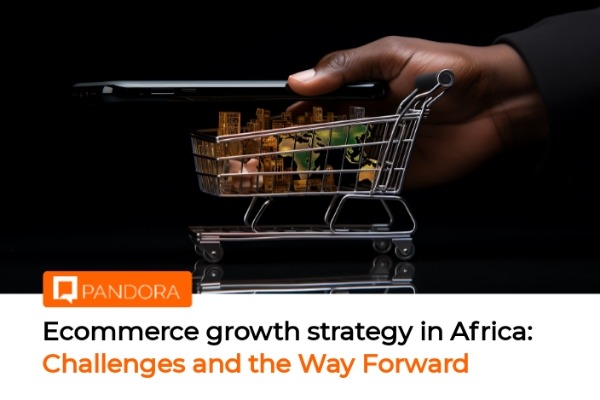I came across a discussion on Quora about e-commerce challenges in Africa. One of the members who used to run e-commerce businesses in South Africa, Botswana, Kenya, and Tanzania narrated his experiences. Some of his biggest challenges were logistics and payment gateways.
“There are no common payment gateways for most African countries, and I ended up having to manage about 9 different payment gateways for 4 countries.”
That was about nine years ago, and things have definitely improved with the increase in internet penetration, smartphone adoption, and the growth of digital payment systems.
Payment gateways like Paystack, Flutterwave, VoguePay, Interswitch, and Remita, alongside global options like PayPal and Stripe, are helping to facilitate online transactions across the continent. In fact, Africa’s e-commerce landscape is projected to have a market size of $940 billion by 2032, and half a billion African shoppers will be online by 2025.
Credit: techcabal
Yet, many e-commerce businesses on this continent still face some challenges that you can’t find in some developed economies. Take Jumia Nigeria, for instance. Despite expanding to multiple countries and attracting significant investment, it still faces challenges in achieving profitability and navigating the evolving e-commerce landscape.
Issues like gaining customer trust, market integration, and infrastructure deficits are a big problem. How can businesses operating in Africa tackle these challenges? I’ll discuss some growth and effective marketing strategies to help you get started.
Challenges Hindering Ecommerce Growth In Africa
Before we start learning about various promising strategies I’ve put together in this piece, let’s first examine the challenges facing E-commerce businesses in Africa to get a clearer understanding of what we’re tackling.
These challenges include low trust in online transactions, fragmented markets, poor infrastructure, limited internet access, and payment and logistics issues.
1. Poor infrastructure
Limited access to roads and broadband connectivity tops the list of poor infrastructure. In Nigeria, for instance, before some products are moved from the northern part of the country to the other regions and vice versa, many business days are gone. This is due to a lack of good transportation infrastructure.
This affects timely access to goods and businesses’ ability to deliver on time. It also includes limited warehousing facilities, which increases costs.
Limited broadband connectivity also hinders businesses from connecting with a broader audience due to poor connectivity.
A survey shows that 52% of African businesses consider the lack of appropriate internet connectivity to be their major obstacle to improving revenue from e-commerce.
In comparison, 39% claimed that logistical problems were barriers to integration into the online market. These infrastructure challenges are impacting delivery speeds, cost, and market accessibility.
2. Payment and financial barriers
42% of African businesses reported that payment gateways are a constraint in e-commerce. Many buyers in remote African settings do not participate in online payment due to the lack of accessibility to digital financial services. Most people also prefer physical locations where they can pay cash or interact with the seller in person due to fraud and cybercrime. These challenges limit e-commerce businesses’ expansion and reach, resulting in poor growth.
3. Lack of trust from consumers
I mentioned this earlier, and this is a result of rampant fraudulent activities. There have been scenarios (not only in Africa though) where customers’ information was stolen and used for criminal activities, which further makes buyers hesitant to share relevant information with businesses.
There’s also the case of what was ordered versus what was delivered being different. Such cases seculate on social media and tend to discourage others from purchasing goods online.
A survey shows that 48% of MSMEs identified customers’ lack of trust in e-commerce marketplaces and websites as a challenge to growing their African e-commerce business.
Having understood the challenges businesses face operating online in Africa and the reasons behind them, let’s examine the various e-commerce growth strategies that can help curb these challenges.
E-commerce Growth Strategies For Businesses in Africa
Despite the challenges many e-commerce businesses in Africa face, here are strategies to foster economic growth, empower businesses, and improve consumer access to goods and services.
1. Building Consumer Trust
You don’t just tell people to trust you and believe they will. Trust must be earned. To grow an e-commerce business in Africa, businesses must build online buyer trust.
What does this look like?
It’s basically all about E-commerce businesses prioritising honesty, reliability, and consistency. From your customer service to your in-store managers and delivery agents, everyone on your team should deliver the best services to customers at every opportunity.
If this requires investing in training, then do it. Consumers quickly become discouraged from patronising e-commerce businesses due to poor service and unsatisfactory product quality.
Here’s an example of how a clothing retailer approached the trust-building strategy. Patagonia publicly shared its supply chain costs, enlightening customers about the actual pricing of its products while reinforcing its commitment to environmental sustainability.
This led to increased customer loyalty, with a report showing a 40% rise in sales within a year. This shows that e-commerce businesses should be more transparent with customers to build trust and a strong relationship, which will convert to sales and grow their business.
It is also essential to implement secure payment gateways and offer buyer protection. In a world of scams and phishing, one way to build consumers’ trust is to display customer reviews. Genuine reviews are one of the best marketing strategies, yielding tremendous results.
Statistics show that 71% of consumers read online reviews when researching businesses, and Facebook and Instagram are the most popular social media platforms for reading customer reviews. Effecting this strategy is a key way to gain customer trust, which in turn helps the growth of your e-commerce business.
2. Market Integration
Many African eCommerce businesses struggle to reach a broad audience due to differences in consumer behaviour, regional preferences, and distribution challenges. Africa is multicultural, which is also reflected in consumption patterns, hence fragmented markets.
The question is how to unify this market. One way is through SEO and content marketing. In reality, a business cannot market to the entire continent because of the size and, as I already mentioned, differences in consumer behaviour.
This means your audience may be scattered in specific geographic locations across a country or the entire continent. This is where search engine optimisation and content marketing can help to reach each specific audience.
As an e-commerce business, you can optimise specific products using region-specific keywords to improve search visibility in different local markets. You can also use platforms like Facebook, Instagram, and TikTok to run geo-targeted ads and connect with diverse audience segments.
One way to solve the distribution problem is to have local partnerships in the geographical locations where you want to sell. LVMH does this with some of its brands through distributor agreements, joint ventures, and licensing agreements, allowing partners in different regions to produce and sell with their name while they generate revenue from it.
A specific example is their DFS, which operates globally in travel retail. This business model is reliant on local partnerships and logistical networks. However, you have to be careful so that quality is not compromised. Besides, you should first establish a good reputation to operate at that level.
3. Improving Infrastructure
Strong infrastructure supports all successful e-commerce businesses worldwide, enabling platforms like Amazon, Etsy, and similar companies to offer seamless services to global consumers. In Africa, however, many consumers face slow internet, unreliable payment options, and delayed deliveries, undermining their trust in online shopping. To solve the above challenges, businesses must focus on expanding internet access, enhancing payment solutions, and streamlining logistics.
How can this be achieved?
- Optimise websites and mobile apps: This is specifically to accommodate low bandwidth. Businesses can optimise websites and mobile apps for low-bandwidth users by ensuring that pages load quickly, even on slow connections. Businesses can also introduce SMS or USSD-based ordering systems, just as banks have implemented, allowing customers to shop without the Internet.
- Leveraging social commerce on social media platforms: Another innovative approach is leveraging social commerce on WhatsApp, Facebook Marketplace, and Instagram Shops. These platforms allow users to browse and buy products with minimal Internet access. So, instead of focusing on your website, bring your shop to these platforms and set it up so consumers can buy and pay quickly.
- Offer multiple payment options: For payment infrastructure, ensure you offer multiple payment options, including mobile money, bank transfers, debit/credit cards, and cash-on-delivery. This flexibility allows customers to choose a method they are comfortable with.
- Invest in good logistics: Finally, streamline logistics, as poor delivery services can ruin the customer experience—partner with reliable local courier services that understand the challenges of their region. Also, invest in real-time tracking and AI-driven route optimisation to help deliver faster and keep customers updated on their orders.
Key Takeaway
E-commerce growth strategies in Africa that can help tackle the continent’s business challenges include building trust, market integration, and infrastructure development. Trust comes from prioritising honesty, reliability, and consistency in the quality of goods and services. Market integration involves region-specific keyword optimisation to improve search visibility in local markets and adopt local partnerships. To address the infrastructure deficit, businesses must also focus on expanding internet access, enhancing payment solutions, and streamlining logistics. If you enjoyed reading this article, check out our article Tackling Africa’s Biggest Marketing Challenges: An Interview with Kehinde Ruth Onasoga.






Leave a Reply